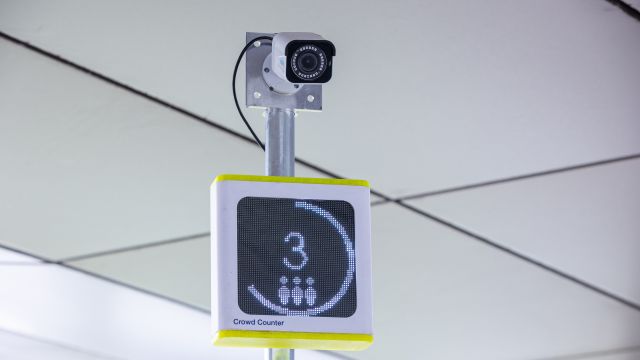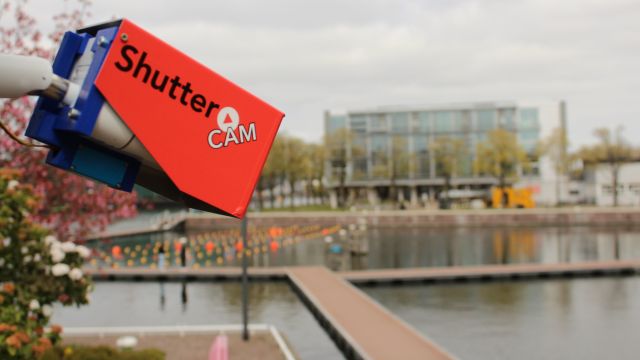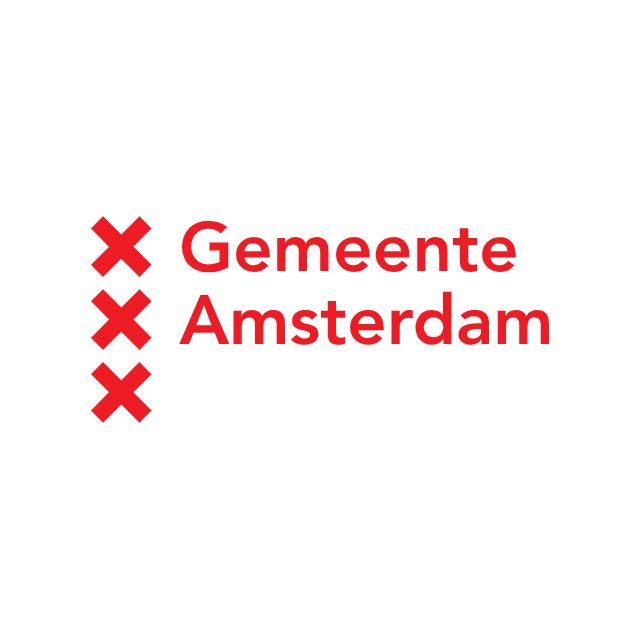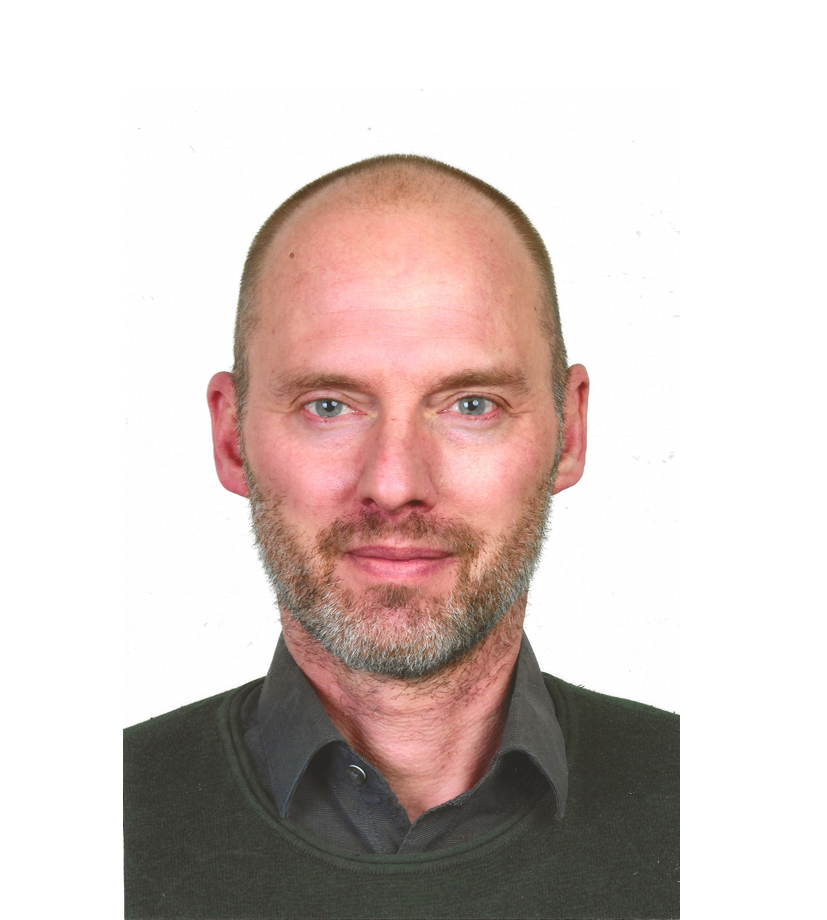Redesign Transparent Crowd Monitoring Camera
The number of crowd monitoring cameras in public places is increasing. What could be done to inform and ensure people that these cameras are there only for counting? The Transparent Crowd Monitoring Camera project developed new design concepts to experiment with in the heart of the city of Amsterdam.
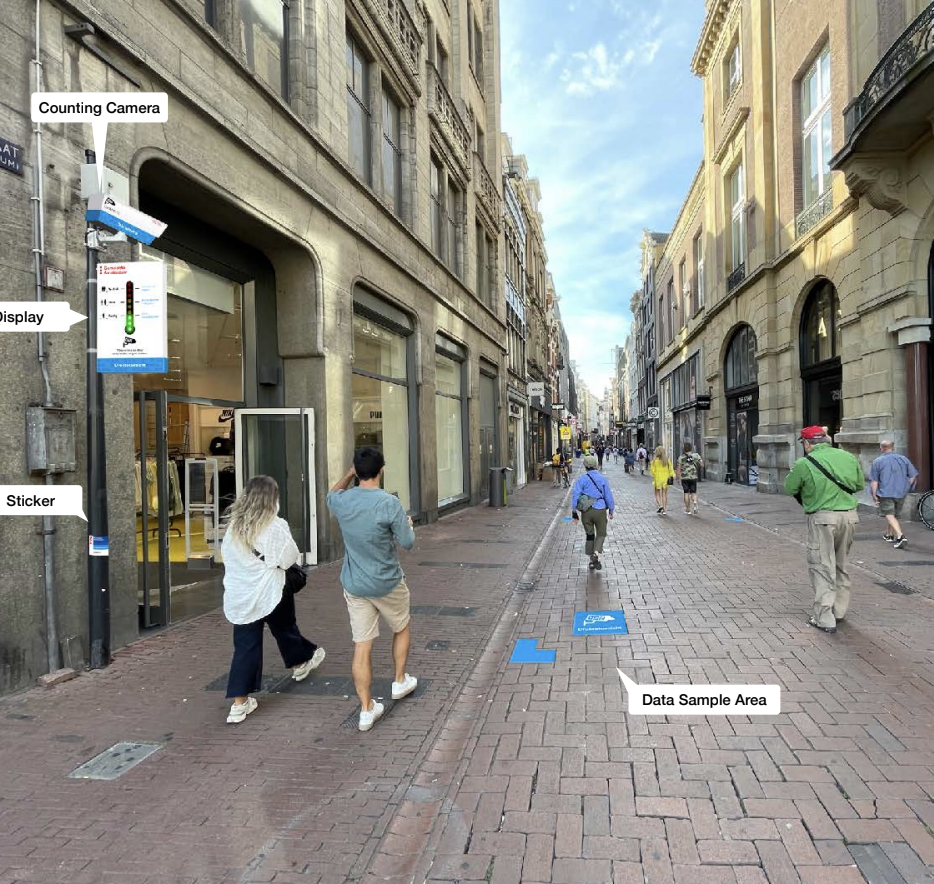
The Transparent Crowd Monitoring Camera project explores which additions or changes to a crowd monitoring setup have a positive contribution to the understanding of a sensor in public space. For instance showing the number of people that are being counted or changing the design of the sensor.
Design sprint for second iteration Transparent Crowd Monitoring Camera
After the first iterations of the project at Marineterrein Amsterdam, the RSL team in collaboration with The Incredible Machine conducted a second design sprint to develop new concepts, which can be tested in the city of Amsterdam.
The focus of the design sprint: how do we inform people in public space in a meaningful way about crowd monitoring systems? Specifically, about why and how cameras are monitoring low velocity traffic and that the public's privacy is warranted.”
— Thijs Turèl, Cofounder Responsible Sensing Lab
A vision for the design of the Transparent Crowd Monitoring Camera
In short, current challenges with regard to Crowd Monitoring Systems are: 1) concerns, with regard to privacy for example, are not addressed in public space, 2) details on crowd monitoring technology are not communicated, 3) transparency about crowd monitoring systems are only provided indirectly through online channels. For Amsterdam in example, detailed information is shared in various places:
- LVMA landing page: https://data.amsterdam.nl/data/datasets/PnrmHN-YvSqjhw/
- Algorithm registry: https://algoritmeregister.amsterdam.nl/ai-system/langzaam-verkeer-monitoringsysteem-amsterdam/1122/
- Sensor registry: https://sensorenregister.amsterdam.nl/
- Maps.amsterdam.nl: https://maps.amsterdam.nl/lvma/
To tackle the above, the design sprint team formulated a vision for the next Transparent Crowd Monitoring Cameras. To begin with, the concepts should be characterized by coherent communication on crowd monitoring. This includes:
1. Recognizability
One clear identity for all ‘touchpoints’–places where the public comes into contact with crowd monitoring.
2. Transparency & Predictability
Be transparent about why crowds are monitored and what scenarios the collected data informs.
3. Relevant feedback
Make real time insights available to the public to make the feedback loop between data collection and improvement as short as possible. Information that informs behavior or opinions on a longer time scale, can be made available online.
4. Readability
Ensure relevant information is readable and understandable, at every touchpoint related to crowd monitoring.
5. Understandability of Technology
Translate algorithms in easy to understand concepts, like ‘threshold’, ’counting’, ‘sample area’, ‘direction’.
6. Reaffirming Privacy
Emphasize that privacy is warranted on every touchpoint.
It is important that we design our digital systems in such a way that it is understandable for everyone.”
— Jorn van Dijk, Specialist (Smart) Mobility Management and Systems, City of Amsterdam
4 new design concepts for transparent crowd monitoring
During the design sprint, the team developed a design for a new Transparent Crowd Monitoring Camera called Druktetoezicht (direct translation: ‘Crowd Watch’). This description in itself is already less technical than the currently used ‘monitoring’ and more neutral in emotion than ‘control’.
In short, Druktetoezicht is a comprehensive system of elements that engages the public in areas where a ‘Langzaam Verkeer Monitoringssysteem Amsterdam’ (LVMA) (translated to: Slow Traffic Monitoring System Amsterdam) setup is in place.
The system brings together collected data about pedestrian flows to provide information to the public about crowdedness in the city and to influence public behavior, for example when it’s extremely busy in areas during an event.
During the design sprint the team focused on 4 aspects regarding Druktetoezicht: the design of the camera, the surrounding area, campaigns to increase awareness, and online information. In turn, a number of design characteristics enhancing transparency of the system in place were formulated for each of the aspects.
1. The design: name and function
- The camera in this design is clearly recognizable with a descriptive name: Telcamera (direct translation: Counting camera). Also, it only collects data from the sample area, which is clearly demarcated with a visible outline on the street;
- Next to the camera, a sign is placed that has an embedded display that projects the information captured by the Telcamera edge algorithms;
- The current sensor sticker used in Amsterdam is modified for better transparency. By making the sticker more verbose and more connected to the other touchpoints, where the public comes into contact with crowd monitoring, it is easier to understand and read.
2. The surrounding area: displays and signages to inform upon entering ‘Druktetoezicht’ areas
- A display is placed that clearly shows 1) this is a Druktetoezicht area, 2) there are counting cameras active (emphasizing they only count, don’t film), 3) the data on real-time crowdedness as well as 4) the potential levels of crowdedness (i.e. normal, busy, too busy), 5) possible interventions at certain levels of crowdedness;
- With digital signage in the surrounding areas of Druktetoezicht areas, the program can directly inform the public and influence their movement around the city.
3. Campaigns: raising awareness about the intentions behind Druktetoezicht
- PR focused on informing the public about the program on site. For example, in the form of beer coasters in the cafés in the area and by giving hosts a branded vest, to help complete the picture of what constitutes the Druktetoezicht system.
4. Online information on background
- Helping people to more easily find Druktetoezicht in the Sensor Registry: https://sensorenregister.amsterdam.nl/
- By adding Druktetoezicht to the sensor register with its clear branding, the journey from noticing the sensor in public space, to answering all questions online, is complete.
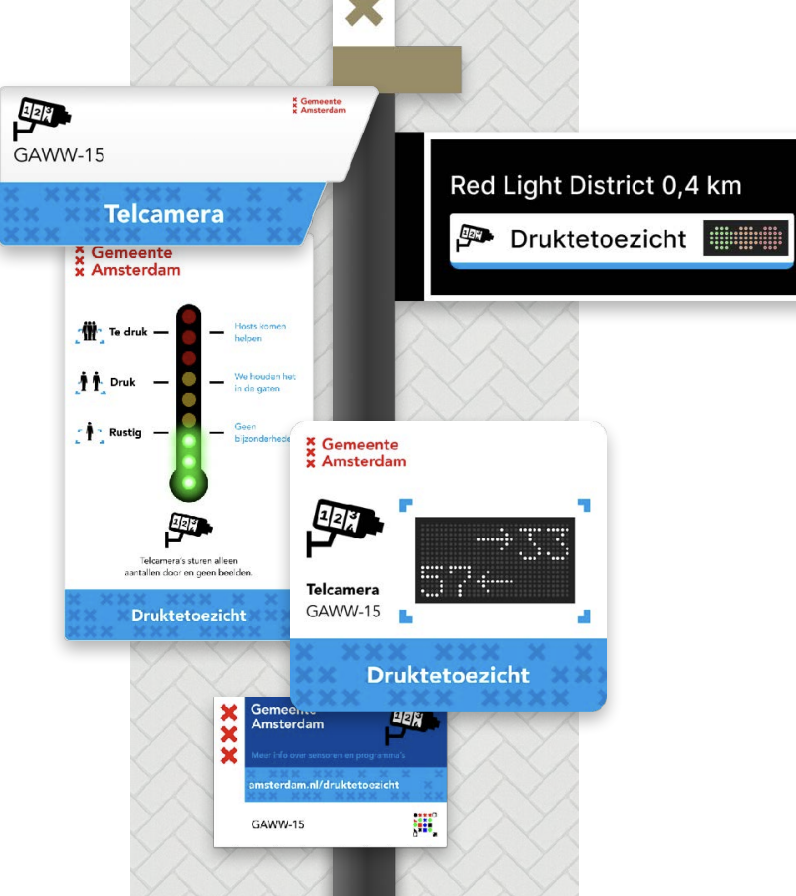
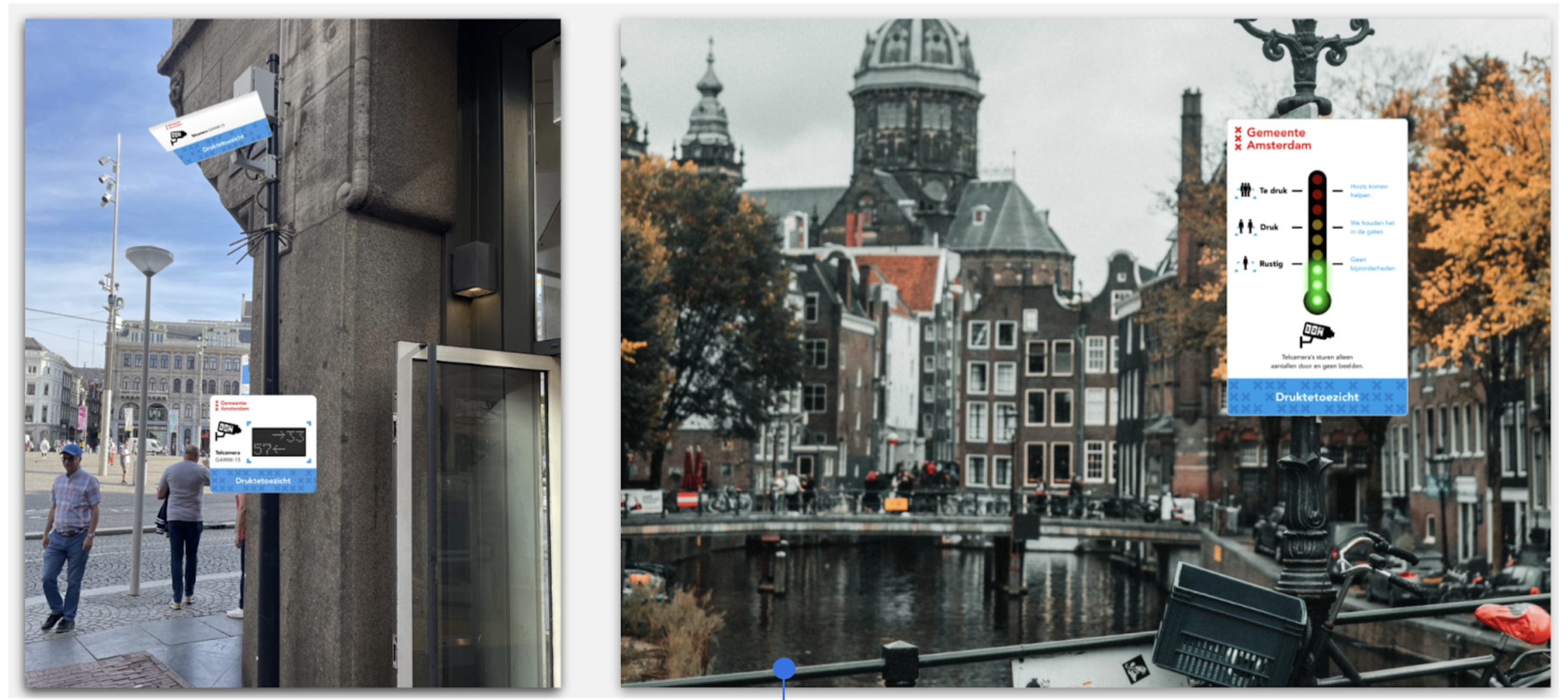
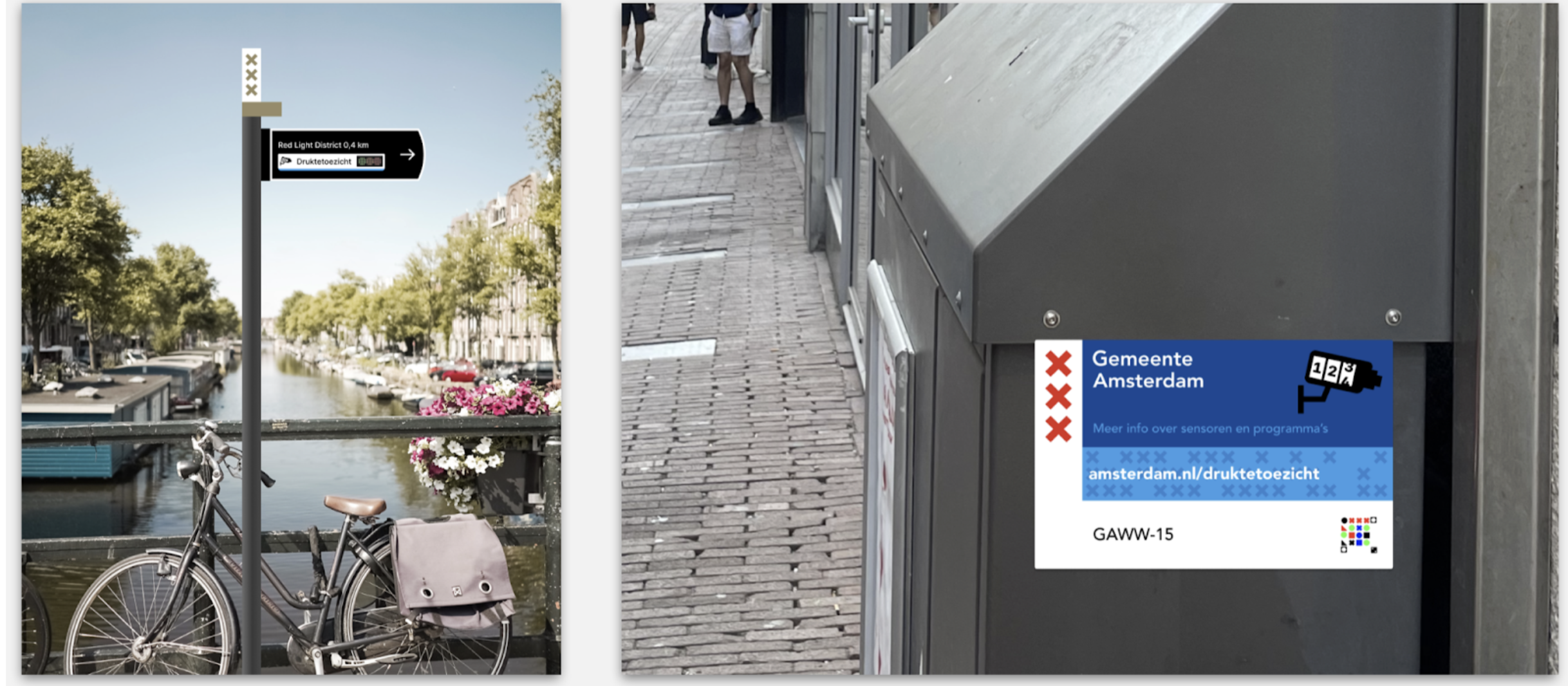
Exploring test locations in the city center
Currently, the team is exploring what central areas in Amsterdam could be used as test locations for the new concepts. Furthermore, the team works on creating a project plan and exploring possibilities of evaluating the key concepts in the field–to find out whether these new iterations improve understanding of and communication about crowd monitoring technologies. With regard to our preliminary audience, the team envisions evaluating the designs with the general public and possibly watchdog organizations.
When social concern increases, support for the use of this type of technology might wear down.”
— Eelco Thiellier, Sr. Advisor & Project Manager LVMA, City of Amsterdam

